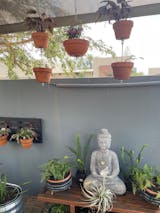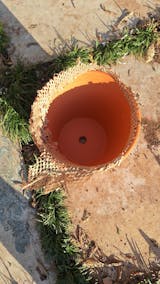
Beautiful Hyacinth Flowers are fit for a queen
There’s never been any doubt that Marie Antoinette, Queen of France from 1774 to 1792, had a great penchant for beautiful things. This love of beauty extended to flowers. The Palace of Versailles was always filled to its golden extremes with an abundance of sweet-smelling blooms, she decorated her outlandish hairstyles with petals and her clothing and accessories were all scented with floral notes. It’s no wonder that the hyacinth flowers, with its strong, sweet, heady aroma, was often incorporated in her perfumes and placed in her vases, thanks to a daily delivery of hundreds of hyacinths to the palace from the Netherlands, as ordered by her husband, King Louis XVI.
Originally from the eastern Mediterranean (stretching from Turkey to Israel) and west and central Asia, the most common hyacinth flowers available to us in South Africa are either blue, pink or white, stemming from the over 2 000 cultivars that were cultivated in the Netherlands during the time of their massive popularity in the 18th century (it seems Marie Antoinette was not their only fan!). The single, dense spike of fragrant flowers, about 20cm high, surrounded by linear leaves, is enough to turn any garden into a palatial spectacle. Whether grown in pots, in outdoor beds or even hydroponically, you’re able to colour-code your display by grouping together the colours that work best in certain areas of your space. When planting in April and May, look toward your bulbs for clues as to what colour the flowers will be when they appear between July and September, transforming your end-of-winter garden with a vibrant re-awakening. White or yellowish bulbs will mean white flowers, while blue flowers will burst from dark-blue bulbs and pink flowers will grow from pinkish bulbs.
The growth of these colourful blooms isn’t hard to achieve if you choose their spot wisely – make sure it’s cool, with morning sun and afternoon shade, and mix a bit of compost into the well-draining soil. After planting your bulbs (either with necks exposed if in containers, or slightly deeper in the ground if in flower beds), toss some mulch over the soil to regulate the temperature and keep moisture locked in. And keep the water coming… Hyacinth flowers, like all other bulbs, love being fed with regular moisture. In the case of hydroponic planting, use devices such as pebbles or marbles to hold the bulb at least 5cm from the base of the container so that the bottom of the bulb does not touch the water, but there is enough room for the sprouting roots to grow downwards through the marbles and into the water. Because cold temperatures encourage this initial root growth, keep the container in a very shaded spot outdoors until the sprout is longer than 5cm, after which time you can move the container to another cool outdoor spot that receives some light. Once in bloom, hyacinths can be moved indoors to be enjoyed on wintry days around the fireplace. Because these flowers last longer when in touch with cool air, place your pots and containers outdoors overnight if you have them inside during the day.
Whether enjoyed indoors or out, hyacinths are definitely not a passing fad, having come a long way from their palatial days. And, although no longer used to adorn ringlets of cone-shaped hairdos, these aromatic blooms are still a part of modern-day feminine beauty regimes, with their scent evident in the perfumes of Chanel No. 19, Anaïs Anaïs and Gucci Envy. Enough to make you feel like the queen of France seven days a week!


September
20 - 21,
2025
Spring Festival
View Event


March
15 - 16,
2025
Dahlia Festival
View Event



Leave a comment